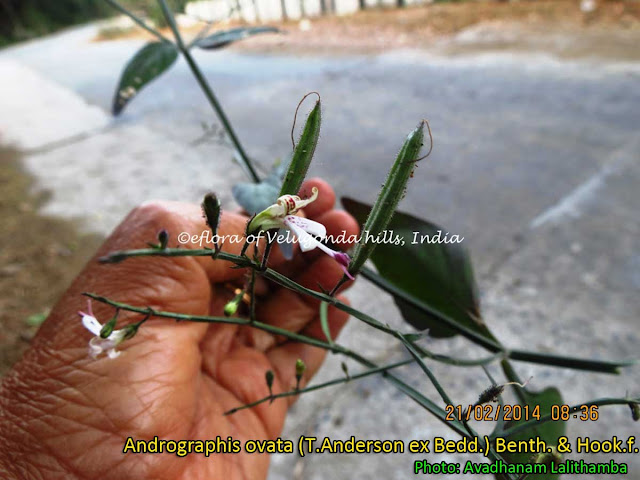

Tylophora indica (Burm. f.) Merr.
Family: Asclepiadoideae
- English: emetic swallow-wort, Indian ipecacuanha
- Assamese: অংতমূল Antamul
- Bengali: অন্তমূল antomula
- Gujarati: દમ વેલ dum vel
- Hindi: अंतमूल antamul, जंगली पीकवान jangli pikvan
- Kannada: ಅಡುಮುಟ್ಟದಗಿಡ adumuttadagida, ಅಂತಮೂಲ antamula, ಕಿರುಮಂಜಿ kirumanji, ನಾಯಿಹಾಲೆ naayihaale, ನೆಪಾಳದಬೇರು naepalada baeru
- Konkani: पितवेल pitvel
- Malayalam: വള്ളിപ്പാല vallippala
- Marathi: अंतमूळ antamul, बेडकी bedaki, खडकी रास्ना khadaki rasna, पितमारी pitamari
- Oriya: ମେହେନ୍ଦି mehendi, Mulini
- Sanskrit: अन्त्रपाचक antrapachaka, लताक्षीरी latakshiri
- Tamil: கழுதைப்பாலை kalutai-p-palai, நச்சறுப்பான் naccaruppan, நாய்ப்பாலை nay-p-palai
- Telugu: మేక మేయని ఆకు, కొండబెండ
Used in Ayurveda. Intake of any part of the plant causes fatal poisoning; when drunk the juice produces nausea, vomiting. Roots stimulant, emetic, expectorant, potentially antitumor, stomachic, diaphoretic, antispasmodic, used for the treatment of asthma, bronchitis, whooping cough, dysentery, diarrhea. Leaves emetic, diaphoretic, chewed for asthma; leaf decoction taken for body pain. Roots and leaves used in hydrophobia. Tylophora alkaloids inhibit cellular immune responses like contact sensitivity to dinitro-flurobenzene and delayed hypersensitivity to sheep red blood cells, in vivo; these alkaloids suppress cellular immune responses when administered at any stage during the immune response, have been shown to have antiasthmatic, antiinflammatory and antianaphy lactic properties. Cytotoxic alkaloids. Veterinary medicine, leaves ground with those of Tinospora cordifolia and goat milk, given in insect bite; leaves along with pepper and garlic made into a paste and given as antidote; entire plant for lung problems and asthma. (CRC World Dictionary of Medicinal and Poisonous Plants)
The whole plant yielded alkaloids including tylophorine, tylphorinine, desmethyltylophorine and desmethyltylophorinine, and a flavonoid kaempferol. The root yielded alkaloids, tylophorinidine and gamma-fagarine. The leaves gave tylophorinidine, dsepticine, d-iso-tylocrebrine; triterpenoids alpha-and beta-amyrin; betasitosterol, stigmasterol and campesterol; phenylalanine; and quercetin. Ceryl alcohol has also been reported from the plant.
The plant exhibited anti-amoebic activity against axenic and polyaxenic strains of Entamoeba histolytica. Tylophorine and 4-methoxy-14-hydroxytylophorine are 2 and 4 times more effective, respectively, than the standard drugs Emetine dihydrochloride and Metroindazole. Tylophorine is found effective in intestinal as well as hepatic amoebiasis in test animals, but its gross toxicity excludes its potential use in humans. Tylophorine also exhibits anti-inflammatory and anti-tumour properties. Desmethyltylophorinegave promising results in leukaemia. The drug irritates the digestive tract. (Indian Medicinal Plants An Illustrated Dictionary)
Tylophora indica (Burm. f.) Merr. : Folklore: Yanandi people in Andhra Pradesh chew leaves daily in the morning in severe bronchitis. Modem Use : Leaf powder is used in bronchitis. (Herbal Cures: Traditional Approach)
157 Published papers on Tylophora indica









































